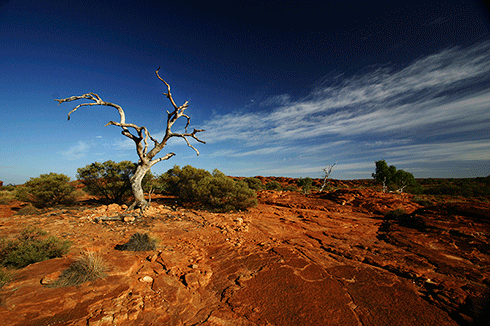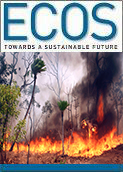
|
Published: 27 October 2014
Will the Outback remain one of Earth’s great natural wonders?
The Australian Outback is one of the last immense regions of nature left on Earth, but its future health depends on having more people, not fewer, living in and actively managing it, a new study by global research and public policy organisation The Pew Charitable Trusts has found.

|
|
The Outback Papers is a new series commissioned and published by PEW. Credit:
Timothy Ball
|
The peer-reviewed study ranks the Outback alongside the natural wonders of the Amazon basin; the boreal forests and tundra of far northern Alaska, Canada, Siberia and Greenland; and the Sahara.
The study, The Modern Outback: Nature, People and the Future of Remote Australia, represents the first major attempt to reach beyond many myths and to coherently define the Australian Outback as a tangible place with distinct needs.
The report is the first of The Outback Papers, which is being commissioned and published by Pew.
The inaugural study highlights the need for immediate recognition of the Outback’s national and international importance and for action that addresses the serious threats degrading its natural and social values.
Dr Barry Traill, director of Pew’s Outback Australia program and co-author of the study, said the Outback stands out in a world where most of the land surface has been modified from its natural state.
‘The Outback is one of the few remaining large natural regions where ecological processes function normally, where the rivers still flow and wildlife still moves across the landscape as it has done for millennia,’ Dr Traill said.
‘Increasingly, the best outlook for retaining nature will be in areas large enough to offer resilience to threats.
‘The Australian Outback is one of these places. Far from being desolate lands “beyond the black stump”, the Outback actually covers 73 per cent of the Australian continent.’
The report’s senior author and leading Australian ecologist, Professor John Woinarski, said the findings show that parts of the Outback are failing. ‘Its environmental values merit the attention and concern of the nation and the world,’ Prof Woinarski said.
‘Otherwise, we risk losing our irreplaceable natural heritage.’ Development in some areas of the Outback is in the national interest, he said, but the scale of such efforts must be carefully managed and, above all else, be sustainable.
According to the report, current threats to the Outback are exacerbated by the lack of people actively caring for its lands. Much of the Outback has fewer people inhabiting and managing the land than at any time over the past 50,000 years.
‘As a society we are losing our feel for our lands, our connection with nature,’ said Prof Woinarski. ‘Ad hoc changes are chipping away at what is distinctive about the Outback and undermining opportunities for a sustainable future.’
Dr Traill agreed. ‘This study puts forward a unified vision for conservation and development of the Outback with people living and working on country at its core.’
Source: The PEW Charitable Trusts



